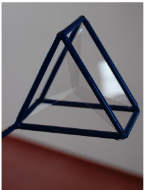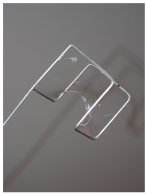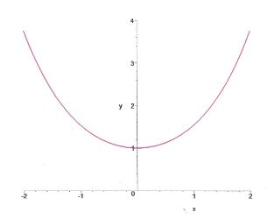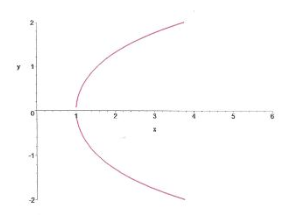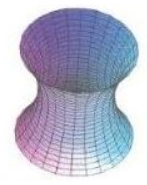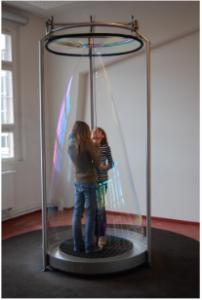Giant soap film
Wires bent into different shapes lie in several containers of soapy water. If you take them out of the containers, shimmering soap films form in the wire forms, which have one decisive property in common: The skins strive to minimise their surface tension and therefore occupy the (locally) smallest possible areas between the wires.


